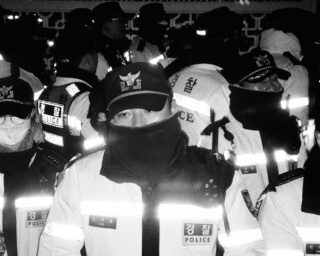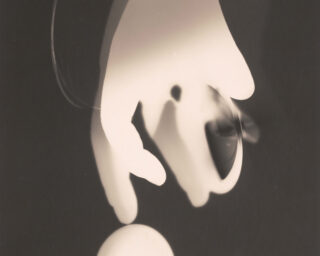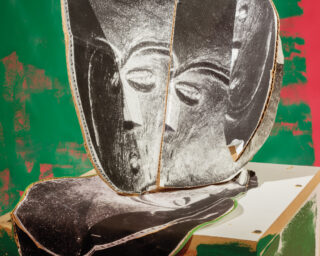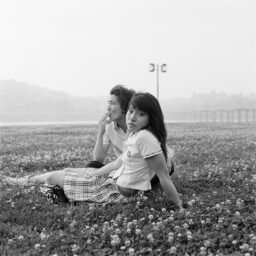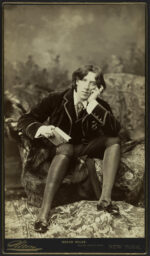5 Exhibitions to See in April
Ellsworth Kelly, the Guerrilla Girls, and the Italian coast. Here are the must-see photography exhibitions in New York this spring.
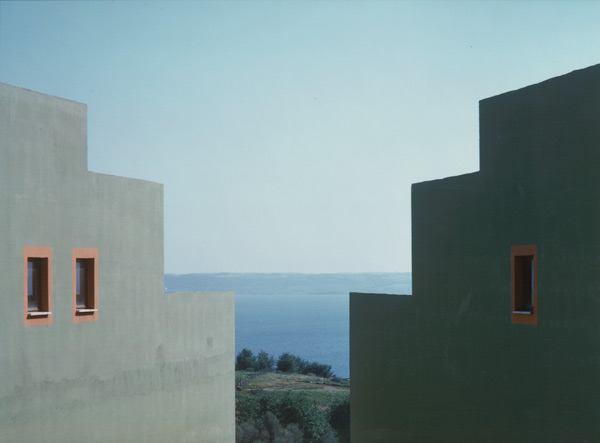
Luigi Ghirri, Trevigliano Mazzano, Portoghesi, case, popolari, 1985 © Estate of Luigi Ghirri. Courtesy Matthew Marks Gallery
Luigi Ghirri: The Impossible Landscape
Matthew Marks Gallery, 526 West 22th Street, New York
Through April 30, 2016
How do small, quiet images of idiosyncratic subjects and their strange textures—torn advertisements, tile arrangements, eccentrically manicured plants, and panes of blue sky—have the power to speak about the construction of memory? This is the enigma at the heart of Luigi Ghirri’s vernacular-style photographs taken predominantly in his home region of Emilia-Romagna, Italy, in the 1970s and ’80s. Informed by an earlier career in landscape surveying, where he learned to codify the emotional and associative sensations of unremarkable surroundings, Ghirri approached landscape photography with a pioneering conceptualism drawn together with affection for his northern Italian milieu. In his 1989 essay “The Impossible Landscape,” after which this show is titled (and anthologized in the recent book Luigi Ghirri: The Complete Essays 1973–1991), the artist suggests that when we are presented with the image of a place—even the sequential, banal elements of our everyday environment—our personal histories show up to complete the picture. The warm quality of Ghirri’s vintage chromogenic and cibachrome prints are documents of a time when color was only just becoming an expressive consideration in photography and amateur work, evolving out of a postwar snapshot generation. Ghirri, alongside other pioneers of color, shifted the way the photograph engaged the modern, everyday world. —Genevieve Allison
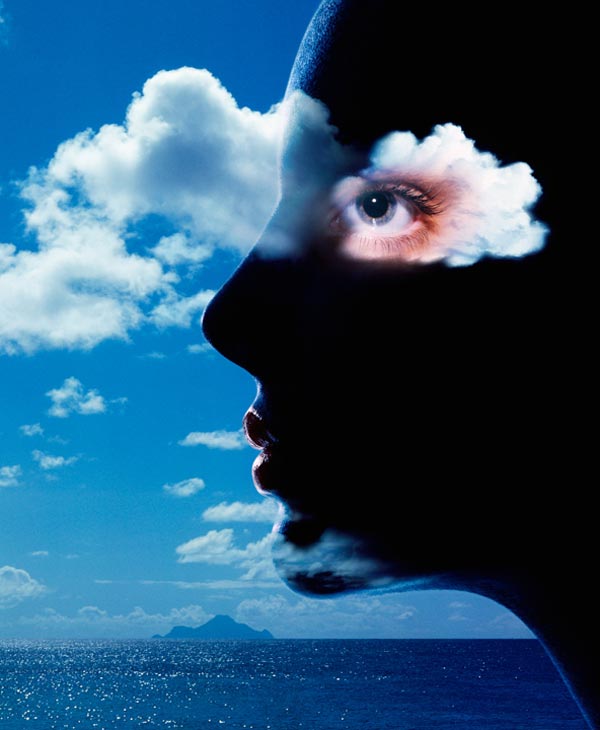
Hiro, Kelly Stewart, New York, 1994 © Hiro. Courtesy Pace/MacGill
Pace/MacGill, 32 East 57th Street, New York
Through April 16, 2016
In a possibly apocryphal story, Richard Avedon is said to have watched Hiro stare at a single transparency all day. Although Hiro may not enjoy the name recognition of the giants he apprenticed under—Avedon and legendary Harper’s Bazaar art director, Alexey Brodovitch—he shares their obsession with formal and technical mastery. Hiro’s black-and-white portraits of notables from Jacques Costeau to Muhammad Ali project their subjects into the realm of the iconic (an Avedon signature). When he did leave the studio environment, he appears to have reigned in chance: one image of passengers crammed into a Tokyo metro feels as if the photographer organized the scene himself. But it’s with the still life form that Hiro thrived and pushed his capacity for invention. With their deeply saturated color and analog manipulation, these images elevate the ordinary to the monumental and surreal—an egg fries on the scabrous surface of a Utah Salt Flat, an ant perches atop a garish-red fingernail. 1970s supermodel Jerry Hall is caught in profile on a Saint Martin beach exhaling a sinuous smoke plume that merges with the clouds—an effortless gesture that is a hallmark of Hiro’s output, even if he might have been scrutinizing his transparencies all day, searching for formal perfection. —Michael Famighetti
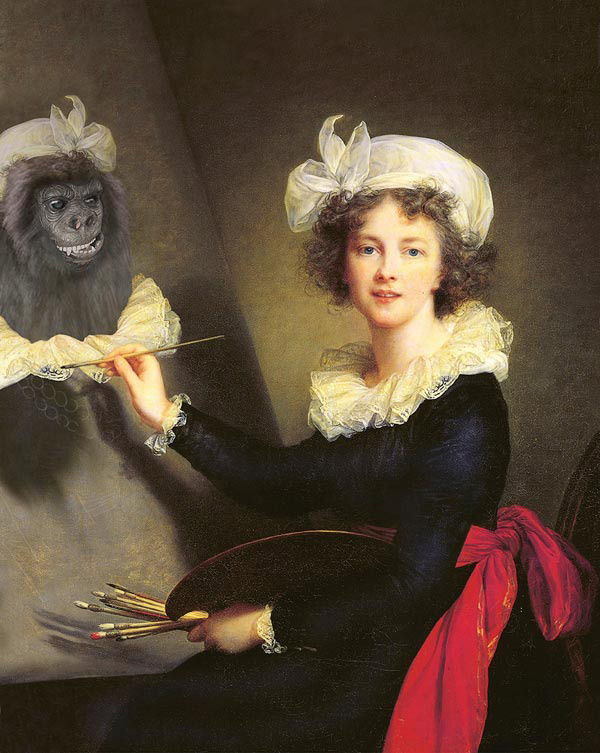
Petah Coyne and Kathy Grove, The Real Guerrillas: The Early Years, AKA Élisabeth Louise Vigée Le Brun, 2015–16 © Petah Coyne and Kathy Grove. Courtesy Galerie Lelong, New York
Galerie Lelong, 528 West 26th Street, New York
Through April 23, 2016
Each pair of artists in this imaginative group exhibition generates images with strikingly diverse methods. In the 1970s, Neville D’Almeida and Hélio Oiticica made “supra-sensorial,” multi-media environments using photographs that depict patterns of powdered cocaine on commercial images of Marilyn Monroe, Jimi Hendrix, and other celebrities. These photographs, printed decades later, were once projected on walls, ceilings, or even into swimming pools as viewers lay on foam mats or in hammocks. Twin brothers, and longtime artistic duo, Doug and Mike Starn share a studio and work side-by-side, essentially as one artist; here, they create labyrinthine patterns of tree branches on delicately layered Japanese paper. Lin Tianmiao and Wang Gongxin, married for thirty years before incorporating their artistic practices, show a series of photographs with figures in otherworldly costume. But the draw of Narrative/Collaborative is new work by Petah Coyne and Kathy Grove, artists with decades-long solo careers, who have come together to create The Real Guerrillas–The Early Years, a never-before-seen series that seeks to document and celebrate each woman who participated with the Guerrilla Girls collective between 1985 and 2000. Conceived as an ongoing project, the series presents fictionalized portraits of each Guerrilla Girl, masked and digitally imposed into an artwork by her artist persona—lesser-known art historical figures including Lyubov Popova, Élisabeth Louise Vigée le Brun, Chansonetta Stanley Emmons, and Remedios Varo. (The prints are accompanied by extensive narrative captions.) Only after a member passes away can her identity be exposed, when Coyne and Grove will reveal a second photograph, named and unmasked. Through this completed, future portrait of each Guerrilla Girl, and the powerful woman behind the mask, Coyne and Grove aspire to acknowledge each woman’s life of anonymity and her work within and outside of the collective. —Taia Kwinter
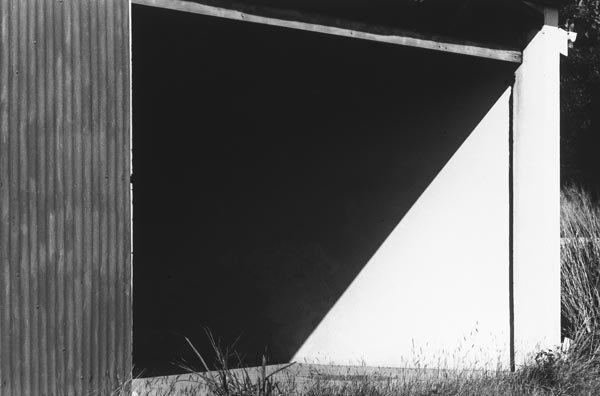
Ellsworth Kelly, Hangar Doorway, St. Barthélemy, 1977 © Ellsworth Kelly. Courtesy Matthew Marks Gallery
Matthew Marks, 523 West 24th Street, New York
Through April 30, 2016
Printed and prepared by Ellsworth Kelly just months before his death, at age 92, in December 2015, the thirty-one gelatin-silver prints presented in this fascinating exhibition—the first ever dedicated to the artist’s photography—are a revelation. Kelly’s little-known talent behind the lens displays the clarity and incisiveness of a vision that transcends mediums. Produced between 1950 and 1982, during a period of remarkable creative ferment when Kelly moved from France to upstate New York, the photographs, which he considered to be independent from his painting, nevertheless suggest the figurative origins behind his boldly abstract canvases. Like his paintings, they look squarely at the natural and built worlds, finding compositions that are at once self-evident and abstract. Architectural structures—doors, windows, roofs, and the shadows they cast—figure throughout, transformed into a language of binaries, diagonals, contrasts and surprising synergies. These forms exist everywhere, according to Kelly. You just don’t see them—until now. —Genevieve Allison
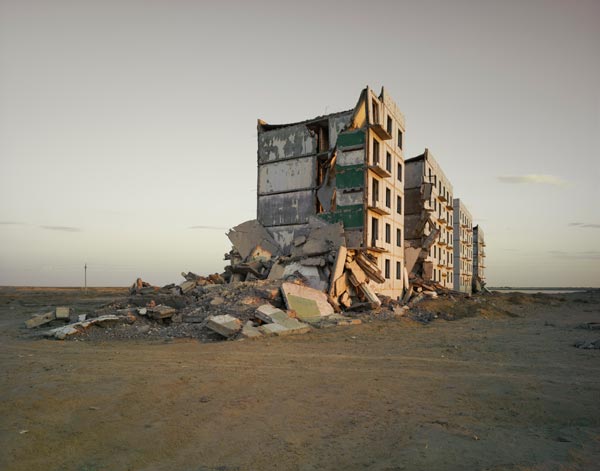
Nadav Kander, The Aral Sea I (Officers Housing), Kazakhstan, 2011 © Nadav Kander. Courtesy Flowers Gallery
Flowers, 529 West 20th Street, New York
Through May 7, 2016
While the splendid ruins of the ancient world provide inspiration to young architects and tourist dollars to local economies—unless they’ve been bombed by ISIS forces—the ruins in Nadav Kander’s photographs in Dust are recent enough to provoke a sense of anguished fascination. Kander discovered the previously unknown sites of Kurchatov and Priozersk, towns along the Russian-Kazakhstand border, on Google Earth, where the physical evidence of Cold War-era nuclear experiments is manifest in partially collapsed buildings—stadiums, administration buildings, or factories—revealed now as humble cenotaphs. A sequence examining the Polygon, an atomic test site opened in 1947, is especially disturbing for what Kander’s images do not or cannot portray. Contrary to official claims, a local population lived in close proximity to the Polygon, where nuclear testing took place, and the subsequent effects of cancer and birth defects are widespread. (The dimming rays of an electric pink sunset at the Polygon are apocalyptic.) In Kander’s images of the Aral Sea, once a thriving fishing port, where water has drained away for irrigation of cotton, the sagging tides bring up pink foam, perhaps the runoff of chemical waste. Summoning the horror of Hiroshima, in the accompanying catalogue Will Self claims that the landscapes in Dust do not aestheticize these ruins or “make beautiful what is not,” but instead they confront Western society with souvenirs of its hubris in science and politics. Many of the former military buildings in these test sites were destroyed to hide the past, but the remaining structures, floating on grasslands like abandoned boats, describe the perils of atomic warfare with subtle but unambiguous power. —Brendan Wattenberg














